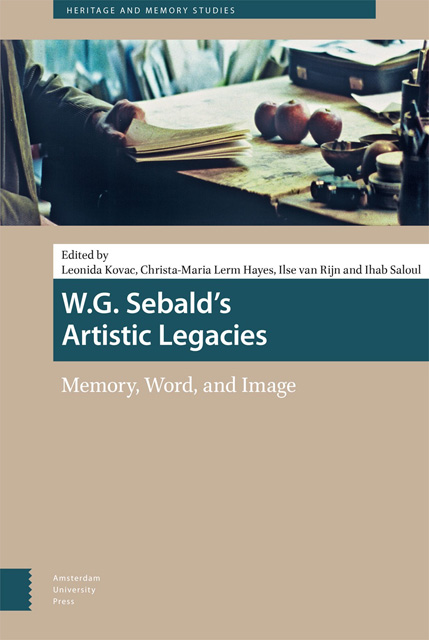10 - Models for Word and Image: Georges Rodenbach to Christian Bök
Published online by Cambridge University Press: 26 October 2023
Summary
Abstract
The prevalence of W.G. Sebald in studies of fictional narratives that incorporate images has led to a lack of theorization of other practices that operate within this terrain. Sebald’s practice is generally to anchor the image in its surrounding text in such a way that the reader is led up to, into and past the image with minimal interruption in the flow of reading. In that way his narratives can explore continuous paths of memory on which images are passing waystations. It is also possible to permit images to slow the narrative, or to draw readers repeatedly back to the images or to use images to cast doubt on the narrator or the narration. I compare Sebald’s practices to what can be found in Georges Rodenbach, André Breton, Tan Lin, Anne Carson, Christian Bök, Fernandez Mallo, Philipp Weiss, and others, in order to suggest that Sebald is only one example in a long discontinuous history of writing on images. This brief chapter, I’ve arranged into a schematic chronology. First, I’ll make a couple of observations on fiction with included photographs before Sebald; then I’ll propose some possibly characteristic qualities of his own practice; and last, I’ll ask some questions about how we might understand his influence on recent fiction that uses photographs.
Keywords: Remembrance and Narrative, Absorption, Interruptions, Observations, Surrealism
Introduction: Practices Before Sebald
There’s a lot to be said about the practice of writing fiction with included images before Sebald, especially because he has become the default model for that practice in academic scholarship. Our emphasis has threatened to eclipse other histories, and it has made it seem as if Sebald was the signal innovator in the tradition. The initial problem with that eclipse of precedent is that there is no consensus on what those precedents are.
In part that is because the histories depend on what is understood by “writing with images.”
- Type
- Chapter
- Information
- W. G. Sebald's Artistic LegaciesMemory, Word, and Image, pp. 185 - 194Publisher: Amsterdam University PressPrint publication year: 2023



